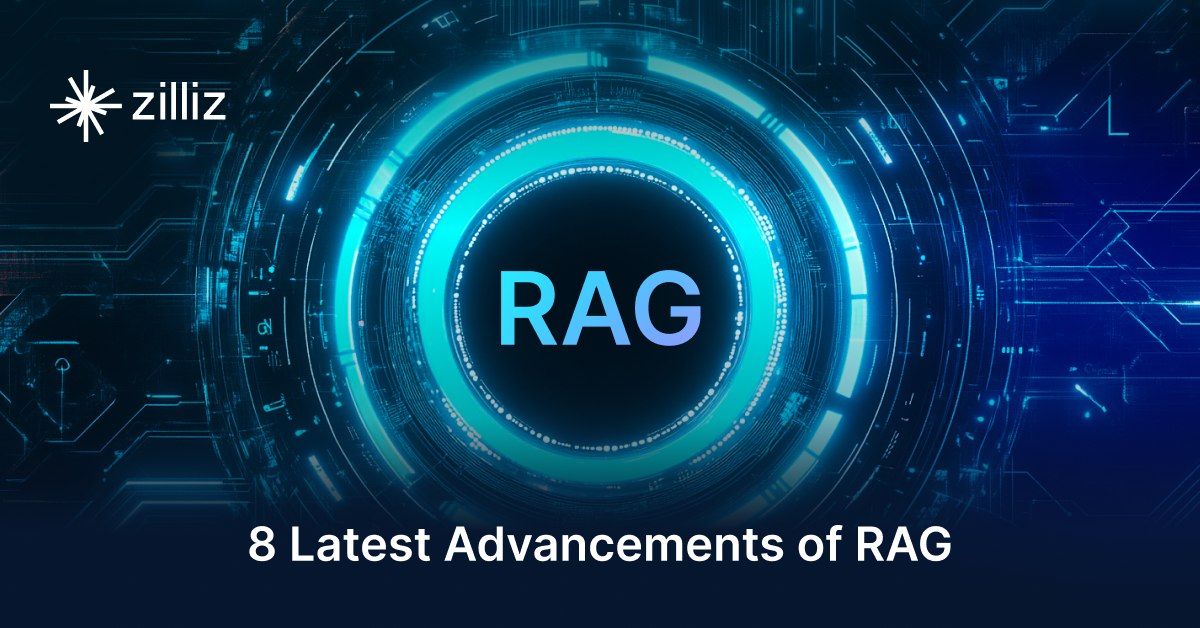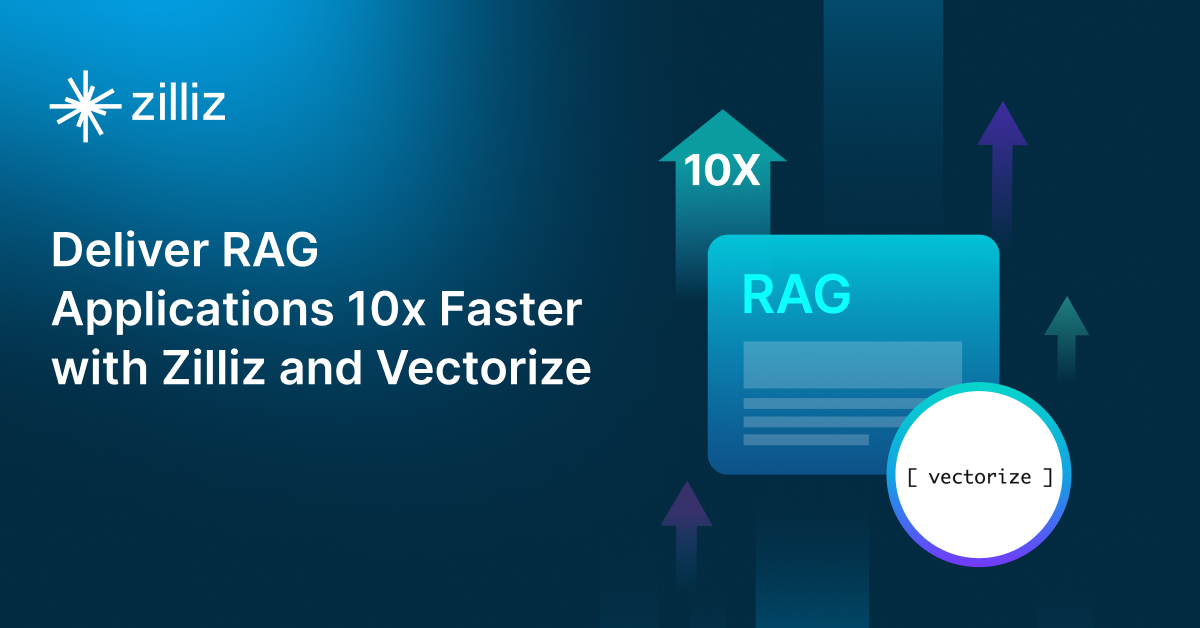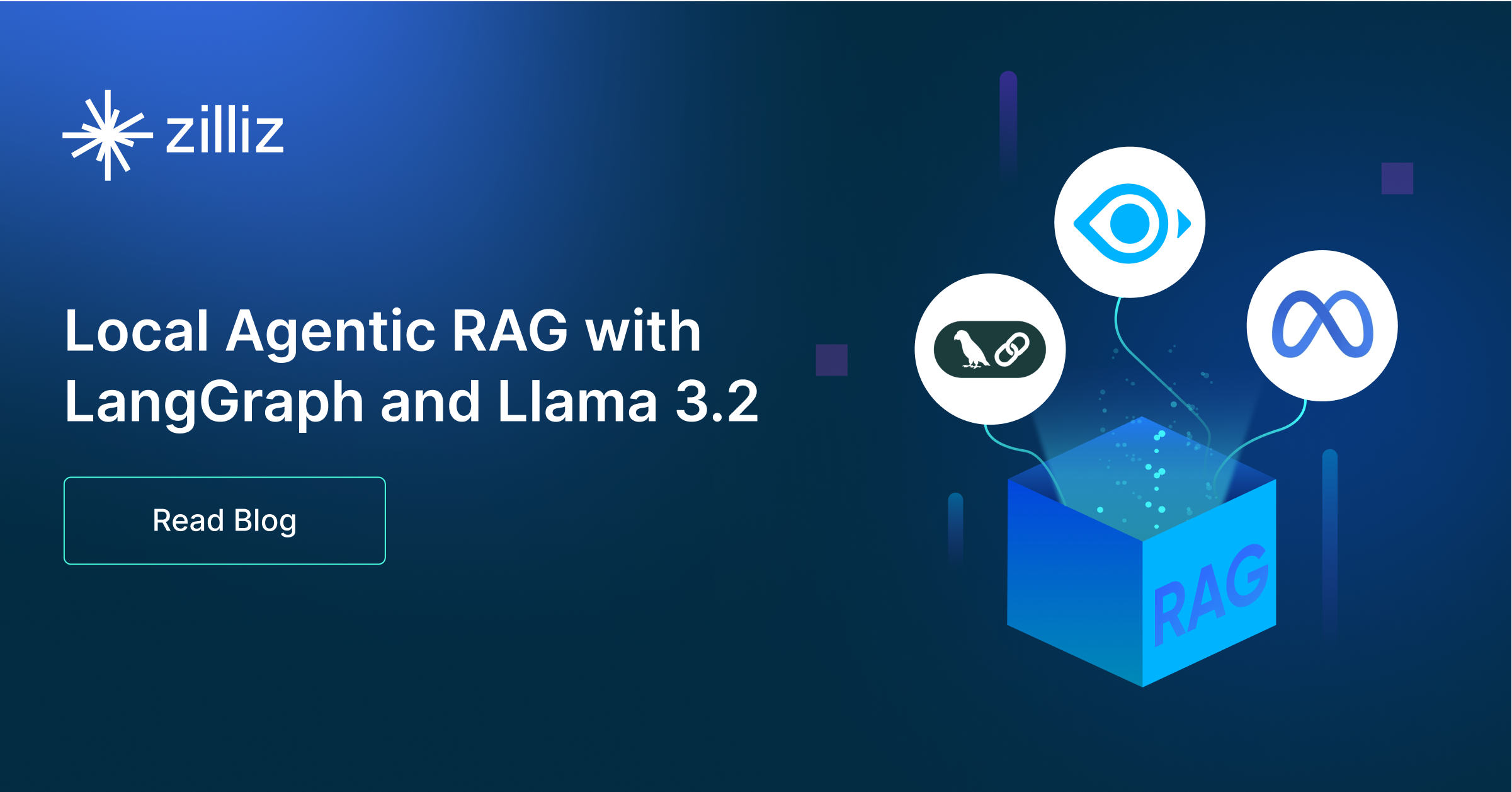Build RAG Chatbot with Llamaindex, Milvus, Databricks DBRX, and Mistral Embed
Introduction to RAG
Retrieval-Augmented Generation (RAG) is a game-changer for GenAI applications, especially in conversational AI. It combines the power of pre-trained large language models (LLMs) like OpenAI’s GPT with external knowledge sources stored in vector databases such as Milvus and Zilliz Cloud, allowing for more accurate, contextually relevant, and up-to-date response generation. A RAG pipeline usually consists of four basic components: a vector database, an embedding model, an LLM, and a framework.
Key Components We'll Use for This RAG Chatbot
This tutorial shows you how to build a simple RAG chatbot in Python using the following components:
- Llamaindex: a data framework that connects large language models (LLMs) with various data sources, enabling efficient retrieval-augmented generation (RAG). It helps structure, index, and query private or external data, optimizing LLM applications for search, chatbots, and analytics.
- Milvus: An open-source vector database optimized to store, index, and search large-scale vector embeddings efficiently, perfect for use cases like RAG, semantic search, and recommender systems. If you hate to manage your own infrastructure, we recommend using Zilliz Cloud, which is a fully managed vector database service built on Milvus and offers a free tier supporting up to 1 million vectors.
- Databricks DBRX: DBRX is a transformer-based decoder-only large language model (LLM) that was trained using next-token prediction. It uses a fine-grained mixture-of-experts (MoE) architecture with 132B total parameters of which 36B parameters are active on any input. It was pre-trained on 12T tokens of text and code data.
- Mistral Embed: A high-performance embedding model designed to convert text into dense vector representations, capturing semantic meaning for tasks like retrieval, clustering, and similarity analysis. It excels in efficiency, multilingual support, and scalability, making it ideal for semantic search engines, multilingual content organization, and large-scale data processing applications requiring rapid, context-aware text analysis.
By the end of this tutorial, you’ll have a functional chatbot capable of answering questions based on a custom knowledge base.
Note: Since we may use proprietary models in our tutorials, make sure you have the required API key beforehand.
Step 1: Install and Set Up Llamaindex
pip install llama-index
Step 2: Install and Set Up Databricks DBRX
% pip install llama-index-llms-databricks
from llama_index.llms.databricks import Databricks
llm = Databricks(
model="databricks-dbrx-instruct",
api_key="your_api_key",
api_base="https://[your-work-space].cloud.databricks.com/serving-endpoints/",
)
Step 3: Install and Set Up Mistral Embed
%pip install llama-index-embeddings-mistralai
# imports
from llama_index.embeddings.mistralai import MistralAIEmbedding
# get API key and create embeddings
api_key = "YOUR API KEY"
model_name = "mistral-embed"
embed_model = MistralAIEmbedding(model_name=model_name, api_key=api_key)
Step 4: Install and Set Up Milvus
pip install llama-index-vector-stores-milvus
from llama_index.core import VectorStoreIndex, StorageContext
from llama_index.vector_stores.milvus import MilvusVectorStore
vector_store = MilvusVectorStore(
uri="./milvus_demo.db",
dim=1536, # You can replace it with your embedding model's dimension.
overwrite=True,
)
Step 5: Build a RAG Chatbot
Now that you’ve set up all components, let’s start to build a simple chatbot. We’ll use the Milvus introduction doc as a private knowledge base. You can replace it with your own dataset to customize your RAG chatbot.
import requests
from llama_index.core import SimpleDirectoryReader
# load documents
url = 'https://raw.githubusercontent.com/milvus-io/milvus-docs/refs/heads/v2.5.x/site/en/about/overview.md'
example_file = 'example_file.md' # You can replace it with your own file paths.
response = requests.get(url)
with open(example_file, 'wb') as f:
f.write(response.content)
documents = SimpleDirectoryReader(
input_files=[example_file]
).load_data()
print("Document ID:", documents[0].doc_id)
storage_context = StorageContext.from_defaults(vector_store=vector_store)
index = VectorStoreIndex.from_documents(
documents, storage_context=storage_context, embed_model=embed_model
)
query_engine = index.as_query_engine(llm=llm)
res = query_engine.query("What is Milvus?") # You can replace it with your own question.
print(res)
Example output
Milvus is a high-performance, highly scalable vector database designed to operate efficiently across various environments, from personal laptops to large-scale distributed systems. It is available as both open-source software and a cloud service. Milvus excels in managing unstructured data by converting it into numerical vectors through embeddings, which facilitates fast and scalable searches and analytics. The database supports a wide range of data types and offers robust data modeling capabilities, allowing users to organize their data effectively. Additionally, Milvus provides multiple deployment options, including a lightweight version for quick prototyping and a distributed version for handling massive data scales.
Optimization Tips
As you build your RAG system, optimization is key to ensuring peak performance and efficiency. While setting up the components is an essential first step, fine-tuning each one will help you create a solution that works even better and scales seamlessly. In this section, we’ll share some practical tips for optimizing all these components, giving you the edge to build smarter, faster, and more responsive RAG applications.
LlamaIndex optimization tips
To optimize LlamaIndex for a Retrieval-Augmented Generation (RAG) setup, structure your data efficiently using hierarchical indices like tree-based or keyword-table indices for faster retrieval. Use embeddings that align with your use case to improve search relevance. Fine-tune chunk sizes to balance context length and retrieval precision. Enable caching for frequently accessed queries to enhance performance. Optimize metadata filtering to reduce unnecessary search space and improve speed. If using vector databases, ensure indexing strategies align with your query patterns. Implement async processing to handle large-scale document ingestion efficiently. Regularly monitor query performance and adjust indexing parameters as needed for optimal results.
Milvus optimization tips
Milvus serves as a highly efficient vector database, critical for retrieval tasks in a RAG system. To optimize its performance, ensure that indexes are properly built to balance speed and accuracy; consider utilizing HNSW (Hierarchical Navigable Small World) for efficient nearest neighbor search where response time is crucial. Partitioning data based on usage patterns can enhance query performance and reduce load times, enabling better scalability. Regularly monitor and adjust cache settings based on query frequency to avoid latency during data retrieval. Employ batch processing for vector insertions, which can minimize database lock contention and enhance overall throughput. Additionally, fine-tune the model parameters by experimenting with the dimensionality of the vectors; higher dimensions can improve retrieval accuracy but may increase search time, necessitating a balance tailored to your specific use case and hardware infrastructure.
Databricks DBRX optimization tips
To optimize Databricks DBRX in a Retrieval-Augmented Generation (RAG) setup, focus on efficiently integrating DBRX with your vector store for seamless retrieval and real-time document processing. Leverage the platform’s scalability by partitioning large datasets and using optimized cluster configurations to handle intensive tasks. Ensure your embeddings are stored in the most efficient format, and use indexing techniques like HNSW or IVF for faster retrieval. Optimize Spark jobs by fine-tuning resource allocation, minimizing shuffle operations, and utilizing caching to reduce query latency. Finally, monitor and adjust the job execution plan to avoid unnecessary overhead, ensuring optimal performance while maintaining cost efficiency.
Mistral Embed optimization tips
To optimize Mistral Embed in a RAG setup, preprocess text by removing redundant whitespace, special characters, and normalizing casing to reduce embedding noise. Use batch processing for bulk embeddings to leverage GPU parallelism. Fine-tune Mistral Embed on domain-specific data if retrieval accuracy is low. Reduce input sequence length via truncation or sliding windows for long documents. Cache frequent queries to save compute. Test different pooling strategies (mean, max) for sentence-level embeddings and normalize outputs to improve similarity scoring consistency.
By implementing these tips across your components, you'll be able to enhance the performance and functionality of your RAG system, ensuring it’s optimized for both speed and accuracy. Keep testing, iterating, and refining your setup to stay ahead in the ever-evolving world of AI development.
RAG Cost Calculator: A Free Tool to Calculate Your Cost in Seconds
Estimating the cost of a Retrieval-Augmented Generation (RAG) pipeline involves analyzing expenses across vector storage, compute resources, and API usage. Key cost drivers include vector database queries, embedding generation, and LLM inference.
RAG Cost Calculator is a free tool that quickly estimates the cost of building a RAG pipeline, including chunking, embedding, vector storage/search, and LLM generation. It also helps you identify cost-saving opportunities and achieve up to 10x cost reduction on vector databases with the serverless option.
 Calculate your RAG cost
Calculate your RAG cost
What Have You Learned?
Congratulations on completing this tutorial! You’ve just unlocked the exciting world of Retrieval-Augmented Generation (RAG) systems by mastering the integration of key components such as LlamaIndex, Milvus, Databricks DBRX, and the Mistral Embed model. You learned how a robust framework like LlamaIndex allows you to efficiently manage your data, working seamlessly with the vector database, Milvus, to store and retrieve information at lightning speed. The power of LLMs, coupled with optimized embedding models, enriches your system, enabling it to generate contextually relevant and insightful responses based on your unique data inputs.
But that’s not all! We also shared fantastic optimization tips to make your RAG system even more efficient. You’ve got a free RAG cost calculator at your fingertips to help you assess and budget your projects wisely. Can you feel the potential bubbling up? The skills you've gained here enable you to Innovate and tailor RAG applications that not only meet your needs but can also carve new paths in how we interact with data! So, go ahead! Grab your toolkit, unleash your creativity, and start building, optimizing, and revolutionizing your own RAG applications—the possibilities are endless, and your journey has just begun!
Further Resources
🌟 In addition to this RAG tutorial, unleash your full potential with these incredible resources to level up your RAG skills.
- How to Build a Multimodal RAG | Documentation
- How to Enhance the Performance of Your RAG Pipeline
- Graph RAG with Milvus | Documentation
- How to Evaluate RAG Applications - Zilliz Learn
- Generative AI Resource Hub | Zilliz
We'd Love to Hear What You Think!
We’d love to hear your thoughts! 🌟 Leave your questions or comments below or join our vibrant Milvus Discord community to share your experiences, ask questions, or connect with thousands of AI enthusiasts. Your journey matters to us!
If you like this tutorial, show your support by giving our Milvus GitHub repo a star ⭐—it means the world to us and inspires us to keep creating! 💖
- Introduction to RAG
- Key Components We'll Use for This RAG Chatbot
- Step 1: Install and Set Up Llamaindex
- Step 2: Install and Set Up Databricks DBRX
- Step 3: Install and Set Up Mistral Embed
- Step 4: Install and Set Up Milvus
- Step 5: Build a RAG Chatbot
- Optimization Tips
- RAG Cost Calculator: A Free Tool to Calculate Your Cost in Seconds
- What Have You Learned?
- Further Resources
- We'd Love to Hear What You Think!
Content
Vector Database at Scale
Zilliz Cloud is a fully-managed vector database built for scale, perfect for your RAG apps.
Try Zilliz Cloud for Free


